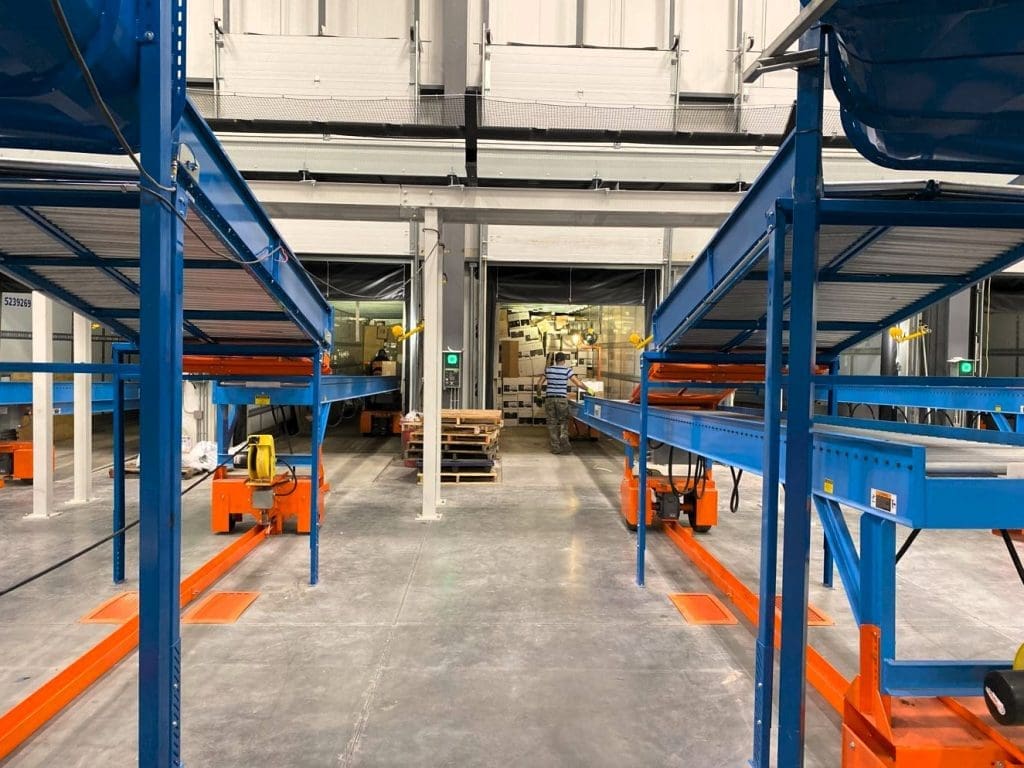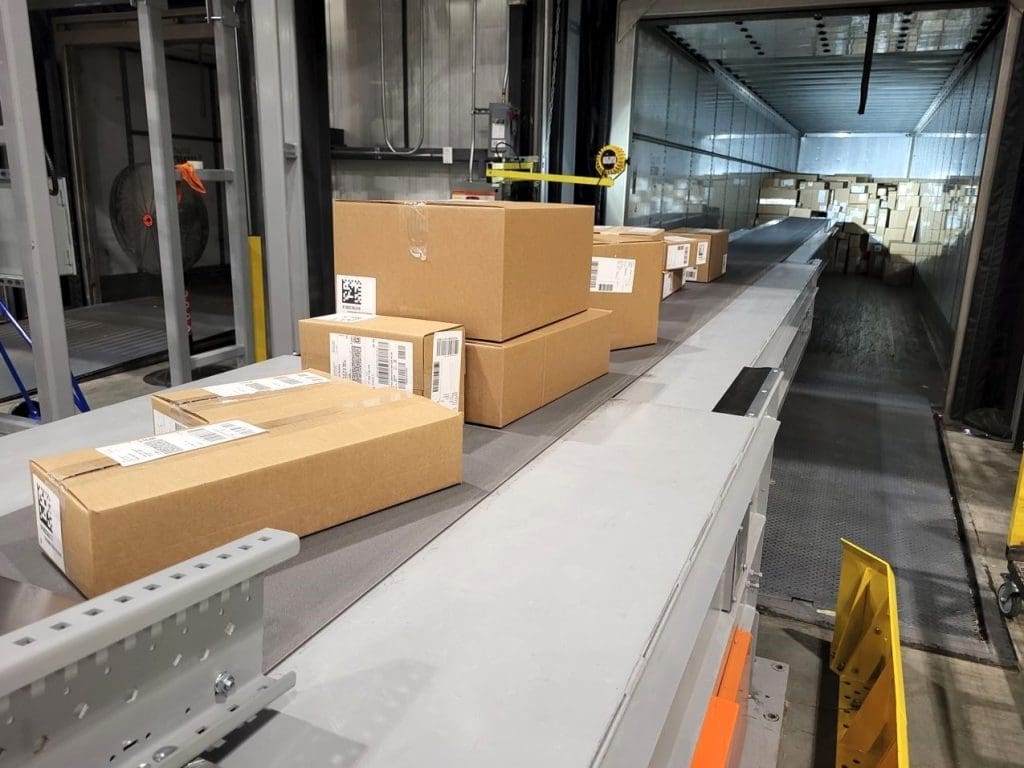Automated conveyor systems have revolutionized the material handling process in warehouses and storage facilities. Among their many uses, the automated conveyors are commonly deployed to load or offload cargo from trucks and trailers. Thanks to the automation in material loading and unloading, this technology has helped to increase efficiency, reduce costs, and avoid risks when transporting materials.
The automated conveyors work by connecting the warehouse and the truck together through an optimized route. The conveyor path is extended into the trailer, so the materials will transfer from the warehouse and go directly inside the vehicle. Since the automation is continuous, these material handling conveyor systems are very useful when loading high volumes of goods into a truck.
There are different types of automated truck loading systems, each with its own efficient features. Some automated loading systems are stationed permanently, while other conveyors are mobile and adaptable to different environments. To learn more, check out these five automated conveyor systems for material loading in trucks:
2. Flexible Powered Conveyor Systems

Flexible powered conveyors are versatile and ergonomic with a space-efficient design that complements other conveyor systems. Their consistent high performance allows these conveyors to load and unload packages in the thousands every day. Some systems come with an optional impact conveyor cart, which protects your conveyor from any impact experienced in the loading process.
The flexible powered conveyors mainly exist to augment other conveyor systems. They feature a limited storage space designed for temporary loading and unloading configurations, which can change abruptly. There are many other versatile setups, including the option to transport packages into the trailer through multiple dock doors.
Flexible powered conveyors enjoy the benefits of improved efficiency, increased safety, and optimized ergonomics. These automated loading systems also have a small storage footprint in a fully retracted state. The conveyors can collapse almost entirely and won’t take up a lot of space while idle.
3. Rigid Drive-Out Conveyor Systems

Rigid drive-out conveyors are built to handle large and heavy packages. This automated loading system easily reaches out from a fixed spot to load and unload packages into a trailer. The conveyor system can be powered without the need for an operator, hence enhancing its efficiency and ergonomics.
The BestReach rigid roller drive-out conveyors can service 53′ trailers. All they require is a solitary operator to uphold efficiencies by floating across dock doors. These durable conveyor systems are great for loading and unloading packages of various sizes and weights. Due to their strong structural design, they are ideal for high-impact shipping tasks that involve multiple shifts in the day.
4. Telescopic Conveyor Systems

Telescopic conveyors are built with several overlapping steel sections, one of which is extended to reach inside the trailer. During use, the operator releases the telescopic conveyor, which extends into the vehicle at the required distance. Once the automated trailer loading has been completed, the conveyor can be retracted as the steel sections slide into each other to shrink the length.
When unloading cargo, the process is reversed. The truck pulls up next to the warehouse door, where the operator uses a smart pad to extend the length of the conveyor system into the trailer. The cargo is moved from the vehicle into the warehouse via a conveyor belt and then extends back to pick up another parcel. Thanks to this automatic unloading system, very little manual effort is required to offload the packages.
With an intuitive design, telescopic conveyors take up minimal space when in use. These automated conveyor systems are quick, efficient, and provide smooth transitions in the loading or unloading process. Available in a different lengths and widths, the telescopic conveyors can be fitted on vehicles of all sizes.





Comments are closed